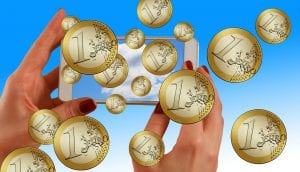
March 5, 2024
Surviving the Herd Mentality: Divergence as a Crucial Survival Strategy
Introduction
Herd mentality, a pervasive force, drives wildebeest across the savanna and humans through market frenzies and political upheavals. It’s a natural survival mechanism where zebras cluster to obscure individual identities from predators. It manifests in stock market bubbles and societal shifts in human societies, often with stark repercussions.
Historical inflexion points like the Salem Witch Trials, Nazi Germany’s rise, and the dot-com bubble burst to exemplify the problematic path of collective thinking. This psychological conformity, deeply rooted in our quest for social belonging, can override personal ethics, leading to actions that align with group norms rather than individual convictions. Understanding this phenomenon is crucial for navigating our world’s social currents.
Mob Mentality: Understanding and Confronting The Crowd
Mob mentality, or herd behaviour, is a captivating and, at times, alarming facet of human conduct. It occurs when individuals in a large group deviate from their usual behaviour. Anonymity within a crowd is a significant trigger, diminishing personal responsibility and fostering deindividuation. This anonymity encourages people to partake in actions like violence or vandalism, shielded by the belief that their deeds won’t be traced back to them.
Furthermore, the deep-seated human desire for social acceptance fuels mob mentality. Conforming to group behaviour becomes a priority to avoid standing out or facing exclusion. This drive to fit in can override personal beliefs, leading individuals to adopt harmful or unethical actions, especially if dissenting carries a risk.
The presence of a compelling leader intensifies mob mentality. Leaders wield significant influence, pushing followers toward more extreme behaviours or beliefs. Research indicates that in a mob, a minority makes informed decisions, which the rest conform to. As the group expands, the number of informed members dwindles, potentially resulting in more extreme and less rational behaviour.
The dynamics of mob mentality are complex and shaped by anonymity, conformity, and leadership. Insight into these elements deepens our understanding of group behaviour, enabling us to navigate these dynamics more adeptly. By comprehending the components at play, we can potentially mitigate the detrimental effects of mob mentality and foster more constructive group interactions.
The Myth of Safety in Numbers: Challenging the Herd Mentality
The notion that herd mentality offers a panacea for social belonging or a shield against adversity is a seductive fallacy. At the same time, the crowd’s comfort might seem like a sanctuary, but history and markets prove that actual progress and success often come from a contrarian approach. The herd provides an illusion of security, but the mavericks and the free-thinkers rewrite the rules and reap the rewards.
Take, for example, the intellectual audacity of Galileo Galilei. In an era governed by the geocentric view, Galileo’s heliocentric theory undermined the collective consensus with a truth that placed the sun, not the Earth, at the centre of our solar system. His defiance of the prevailing dogma earned him condemnation, yet his insistence on empirical evidence over popular belief laid the groundwork for modern astronomy.
Similarly, consider the quintessential contrarian investor, Warren Buffett. In the throes of panic, Buffett’s strategy is to buy when the herd’s instinct is to sell. He capitalizes on the market’s fear, adhering to the principle of being “fearful when others are greedy, and greedy when others are fearful.” This approach has cemented his status as one of the most successful investors in history.
Contrastingly, George Soros, another titan of the investment world, epitomizes the aggressive contrarian mindset. His legendary bet against the British pound in 1992, which earned him the moniker “The Man Who Broke the Bank of England,” was a bold stance against the prevailing market sentiment. Soros’s ability to anticipate the unsustainable and act decisively against the tide turned a profit in the billions.
In dissecting the allure of herd mentality, one must acknowledge its inherent risks—stagnation and vulnerability. The trailblazers and contrarian investors, like Galileo and Soros, demonstrate the ultimate triumph of independent thought and calculated risk over the dubious safety of the crowd. These examples testify to the power of divergence as a crucial strategy for survival and success.
The Risks: Navigating the Dark Side of Herd Mentality
The herd mentality, often romanticized as a beacon of unity and collective strength, can be a double-edged sword, with its darker side casting long shadows on individuality and critical thought. The cons of this psychological phenomenon are not just theoretical musings. Still, they are etched in the annals of history and the ledgers of markets, where the cost of conformity has been paid in lost creativity, misguided actions, and squandered fortunes.
Loss of Individuality and Creativity:
The herd’s path is well-trodden and predictable, leaving little room for the footprints of the pioneer. Consider Leonardo da Vinci, a polymath who defied the intellectual constraints of his time to explore art, science, engineering, and anatomy. His relentless pursuit of knowledge and disdain for the accepted truths of the day led to innovations centuries ahead of their time. Da Vinci’s legacy is a testament to the power of individual thought over collective mediocrity.
Blind Conformity and Groupthink:
The perils of groupthink are starkly illustrated in the financial realm by the collapse of Long-Term Capital Management (LTCM) in 1998. The firm’s strategy, crafted by Nobel laureates and predicated on historical market behaviours, failed spectacularly when the herd, driven by panic during the Russian financial crisis, moved against them. LTCM’s downfall is a cautionary tale of the risks inherent in following the crowd without heed to the unique circumstances of the present.
Inaccurate Information and Misjudgments:
The dot-com bubble of the late 1990s serves as a prime example of how herd mentality can lead to the dissemination of inaccurate information and subsequent market misjudgments. Enamoured by the allure of burgeoning internet companies, investors poured capital into ventures with no sustainable business models, leading to one of the most infamous market crashes in history.
Negative Impact on Minorities and Diversity:
Suppressing minority voices favouring the majority’s roar can stifle diversity and innovation. This is evident in the corporate world, where companies like Apple, under Steve Jobs’s contrarian vision, have thrived by fostering a culture that celebrates dissent and encourages unconventional thinking.
Potential for Violence and Chaos:
The herd’s momentum can escalate to violence and chaos, as seen in the 1929 Wall Street Crash. The collective fear of investors turned into a stampede, leading to a decade-long Great Depression. The market’s plunge is a stark reminder of how mass hysteria can trigger catastrophic outcomes.
In the financial world, contrarian investors like Seth Klarman and Bill Ackman have built empires by betting against the grain. Their success stories underscore the rewards of critical analysis and the courage to stand alone when the herd is charging towards the cliff’s edge.
Examples of Herd Mentality in Society
Religious Cults and Extremist Groups
Religious cults and extremist groups are often characterized by herd mentality. Members are expected to conform to a strict set of beliefs and practices, and dissenting opinions are not tolerated. This can lead to dangerous situations like mass suicides or terrorist attacks.
Political Rallies and Protests
Political rallies and protests are another example of herd mentality. People may feel more empowered and validated when part of a larger group with a shared goal or message, but if things get out of control, this can potentially lead to violence and chaos.
Social Media Trends and Viral Content
In the age of social media, herd mentality can be seen in how specific trends and content go viral. People may feel compelled to engage with a post or video to fit in or gain social validation, sometimes leading to dangerous behaviours like the Tide Pod or Cinnamon challenge.
Fashion Trends and Consumer Behavior
Herd mentality can also influence fashion trends and consumer choices. When a style or product becomes popular, people may feel pressure to conform to fit in or be seen as fashionable, potentially leading to a lack of diversity and unnecessary waste.
Overcoming Herd Mentality
While herd mentality can have positive and negative effects, it’s essential to be aware of its potential dangers and take steps to overcome them:
1. Develop Critical Thinking Skills: Questioning information, evaluating evidence, and making independent decisions based on facts and reason can help avoid herd mentality.
2. Encourage Diversity and Inclusion: Embracing different perspectives and experiences can combat groupthink and ensure all voices are heard.
3. Promote Individuality and Creativity: Valuing unique ideas and perspectives rather than conformity can foster innovation and progress.
Mastering Market Maneuvers: Insights from Unconventional Strategies
Bobby Fischer’s Market Gambit:
In the tumultuous sea of the stock market, a grandmaster’s approach akin to Bobby Fischer’s could have predicted and capitalized on the 1973–1974 stock market crash. While the herd was still clinging to the “Nifty Fifty” stocks, a Fischer-esque strategist would have zagged when others zigged, selling off overvalued stocks before the crash and then scooping up undervalued companies in the aftermath, much like a cunning chess player laying a trap and then seizing the moment for a decisive checkmate.
Bruce Lee’s Agile Investing:
Bruce Lee’s philosophy of “being like water” can be likened to navigating the Dot-com Bubble. As the market swelled with overconfidence in tech stocks, a Bruce Lee-inspired investor would have remained fluid, avoiding the herd’s rigid bullish stance. When the bubble burst, the ability to swiftly adapt and flow into defensive or diverse investments would have mitigated losses, much like Lee’s Jeet Kune Do adapts to an opponent’s attack.
The Sicilian Defense Against Market Panic:
The Sicilian Defense’s strategic defiance parallels savvy investors’ actions during the 2008 financial crisis. As the market plummeted and the herd panicked, selling off assets, an intelligent market player employing the Sicilian Defense would have recognized the opportunity amidst the chaos. By taking a contrarian stance—buying quality assets at depressed prices—this investor would have set the stage for significant gains in the market’s recovery phase.
Martial Arts Counter-Strike in Short Selling:
The principle of the counter-strike in martial arts mirrors the actions of legendary investors like George Soros, particularly during his famous bet against the British Pound in 1992. As the herd poured faith into the stability of the pound, a martial artist investor would have observed, waited, and, at the opportune moment, executed a short sell, using the market’s momentum against itself, leading to a profitable position as the currency fell.
In these historical market scenarios, the mentality and tactics of chess grandmasters and martial arts experts offer a blueprint for contrarian, strategic action. Just as these masters anticipate moves on the board or in the ring, the astute investor reads the market, sidesteps the herd’s stampede, and strikes with precision, securing victory in the financial arena.
Surviving the Herd Mentality: A Lesson in Market Resilience
It requires no effort to succumb to panic, and the reward is absolutely nil. Those who panic when faced with adversity receive what they deserve in the market, which amounts to less than zero, as the masses consistently sell at the lowest point and buy at the highest. History is rich with examples, such as the 2008-2009 financial crisis, the COVID crash, and Trump’s controversial presidential victory in 2015. What stands out is this: if you panic, you are destined for failure, and all you can anticipate is becoming fodder for the circling vultures. Mass psychology clearly states that the optimal time to buy is when the crowd is consumed by extreme fear or chaos in the streets. It becomes an even more attractive opportunity if you have endured some of that chaos yourself.
The wise individual who remains composed walks away with a substantial reward, which has been the case for centuries. Nothing will change for another thousand years. There are no laws or fixed rules in the markets other than the ability to adapt to a given situation. Emotions rule the domain, and chaos ensues when feelings take charge. That is why, like cattle, the lemmings always stampede when the markets experience a sell-off. The masses also tend to join in when the markets are on the verge of a crash. Centuries have passed since the Tulip Bubble, and nothing has changed. Please note that the text has been improved for grammar and syntax while preserving the original content.
Conclusion on The Power and Perils of Herd Mentality
The herd mentality, an intrinsic human trait, has the power to shape societies and economies, but its influence is a double-edged sword. It can forge nations and topple markets, inspire unity and provoke chaos. The 2008 financial crisis exemplifies the dangerous side of this phenomenon, where the collective rush into subprime mortgages led to a global economic meltdown. Investors, driven by the fear of missing out on high returns, ignored glaring risk indicators, resulting in a catastrophic loss of wealth and stability worldwide.
Conversely, the herd mentality has also fueled positive movements, such as the civil rights movement of the 1960s, where collective action led to profound societal changes. Yet, even within these movements, the danger of suppressing individual voices lingered, underscoring the need for a balance between collective will and personal thought.
To harness the power of the herd while mitigating its risks, critical thinking and individual accountability must be cultivated. The tech industry’s boom and bust cycles serve as a reminder that innovation thrives where independent thought is valued over the comfort of consensus. Companies like Apple, which bucked the trend by innovating rather than imitating during the tech bubble, emerged as leaders in their field.
In summary, the herd mentality is a potent force that can drive progress or provoke disaster. Recognizing its power and pitfalls is crucial for steering the collective towards prosperity while safeguarding the value of the individual. In this recognition, society can strike a balance, ensuring a future that benefits from the strength of the many without losing the insights of the few.
Enrich Your Knowledge: Articles Worth Checking Out
Oil Supply Outstrips Demand: Oil Headed Lower 2016

Oil Crash: Crude oil price heading lower 2016



